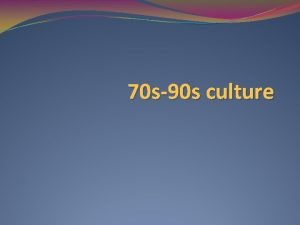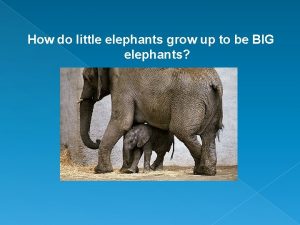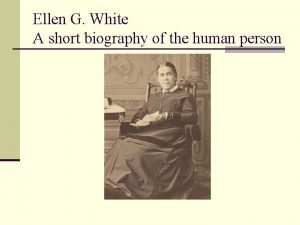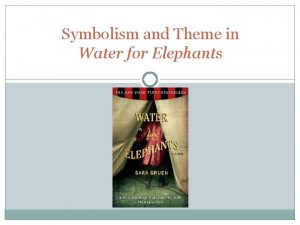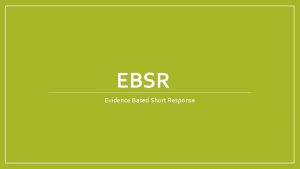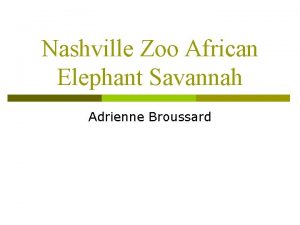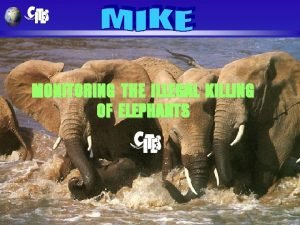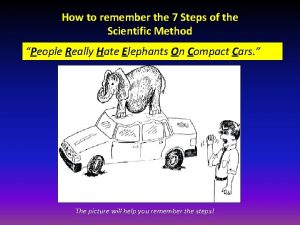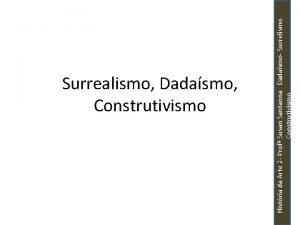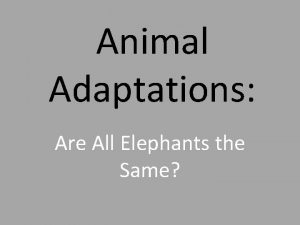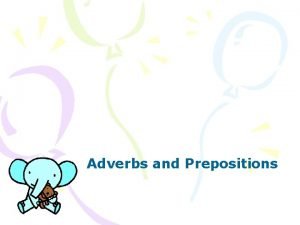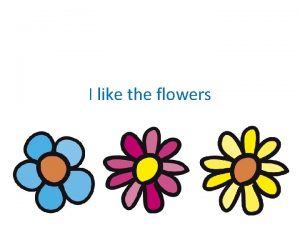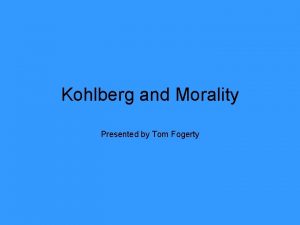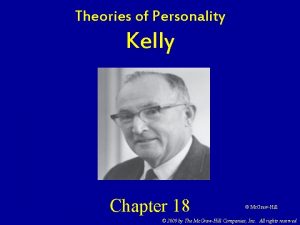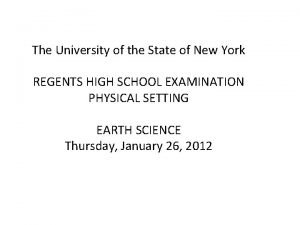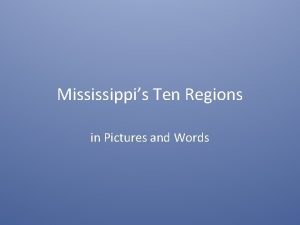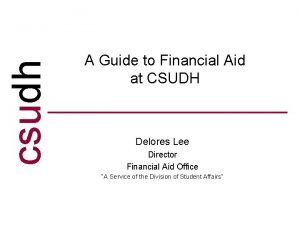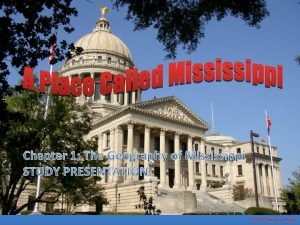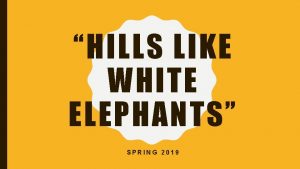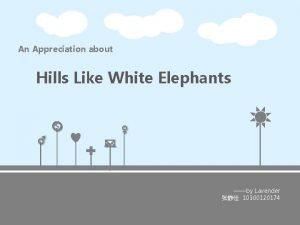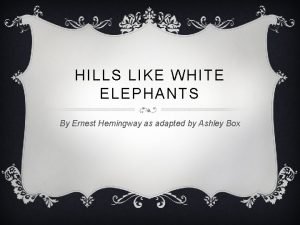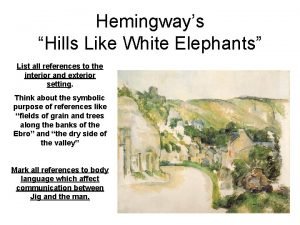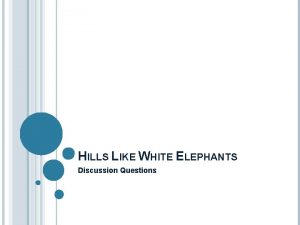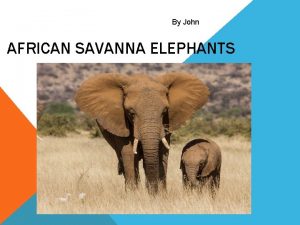70 s90 s culture Hills Like White Elephants


















































































- Slides: 82

70 s-90 s culture

“Hills Like White Elephants” Ernest Hemingway EMBRACE THE CONFUSION

Learning Targets �I can collaborate to determine a story meaning �I can respectfully engage in discussion �I can define 70 s culture through the story

Let’s read it together! �Volunteers for reading: �The Narrator : You will read anything that is not dialogue. �Jig (the girl) �The American �A woman (the waitress)

Multiple Meanings for White Elephant? A few possibilities… �White Elephant: The game where people pass around gifts that nobody wants. �White Elephant: revered and worshipped in India as sacred and something to be cherished. �The expression, “The Elephant in the Room”

What is absinthe? �Green colored drink with very high level of alcohol by volume that originated in Europe. �Banned in the US, France, Netherlands, Belgium, Switzerland, and Austria-Hungary by 1915 for “psychoactive properties. ” Revival in 1990 s in Europe. Legalized in the USA again in 2007. �Known for being mysterious, addictive, and “mind altering. ” Reportedly, these cases of psychosis were over exaggerated. �Sweet taste with a bitter aftertaste…how does this represent the relationship we see in the short story?

Table Group Questions 1. Conclude what is literally happening in the story. 2. Determine the importance of what is not being said in the story? 3. Conclude the motivation/desire of the male character and the female character. 4. Determine the nature of their relationship. Use examples from the text to justify your response. 5. Can you think of any other stories or movies that address the issues discussed here? If so, how are they similar or different to “Hills Like White Elephants”?

Reflection Questions 1. What is the major conflict between the couple? What “procedure” is Jig going to possibly have? What’s the impact of Hemingway’s choice to not tell the reader this info directly? 2. Would you feel differently about the story if the roles of Jig and the man were reversed, that is, if Jig wanted the abortion and the man wanted her to marry him and keep the baby? 3. Should the father and mother have equal say when it comes to having an abortion? Does that fact that the woman’s body is involved, while the man’s is not, factor into your opinion? 4. Could the story be used to support a “pro-life” position? What about a “pro-choice” position?

Roe vs. Wade �Read the history. com summary of the Roe vs. Wade case �Keeping opinions of whether or not abortion should be legal, determine what the arguments are used for/against the government making laws to govern personal choice (issues such as abortion) �Class discussion after…

Environmentalism

Learning Targets �I can define environmentalism �I can define 70 s culture through the story �I can determine why environmentalism exploded in the 70 s

Environmentalism �Improve and protect the quality of the natural environment �New concern for the ecology of the human habitat �As a result of the space program, the energy crisis, scientific warnings about pollution and a future shortage of natural resources, the counterculture's back -to-the-earth movement. � 1970 President Nixon signed the National Environmental Policy Act �required government agencies to assess the environmental impact of public projects

Environmentalism, �The Re-Vision of Planet Earth: Space Flight and Environmentalism in Postmodern America (William Bryant) �Reading excerpt: “Spaceship Earth” �Questions to answer individually (for participation packet)

Questions 1. Explain the environmental movement (purpose, goals). 2. To what extent did environmentalists think the environmental movement would be popular/successful? 3. Determine what a “cowboy economy” and a “spaceman economy” are. � Differences? Benefits? Reasoning/justification for each? 4. Explain the metaphor in the selection. 5. Conclude why the metaphor for environmentalism would be “self-defeating”. 6. Determine what metaphor you would use to describe environmentalism/environmentalists.

Feminism in the 1970 s

Learning Targets �I can define feminism �I can explain why feminism is not about bringing down men �I can research influential feminist icons

Feminism �First Wave: 1850 s- 1920 s �Second Wave: 1950 s-1970 s �Third Wave: 1990 s- Present

Feminism �“organized rage against real oppression” �re-examination of women's roles �National Organization for Women (NOW) in 1966 marked the formation of an official group to represent and campaign for women's concerns. �National Abortion and Reproductive Rights Action League �National Displaced Homemakers, �the battered women's movement, �the Women's Equity Action League, �Women Organized for Employment, �Women Office Workers.

Things Women Could Not Do in the 60 s � Get a credit card. A woman was not allowed to issue a credit card without the permit of her husband. In the case if an unmarried woman is requesting a credit card, a bank could refuse to issue it. The things got changed in 1974 once with the issue of the Equal Credit Opportunity Act that claimed that it was illegal to refuse a credit card to a woman based on her gender. � Get pregnant at work. Until the issue of The Pregnancy Discrimination Act from 1978, a pregnant woman could be easily fired for becoming pregnant � Get an Ivy League education. Yale and Princeton did not accept female students until 1969. Cornell University and the University of Pennsylvania started accepting women in 1870 and 1876, Harvard didn't admit women until 1977. Columbia started accepting women to high education at the beginning of 1981 � Serve on a jury. The reason why women could not serve on a jury is that they have been seen in that period of time as housewives and home makers with the primary place at home. Women in 1950 - 1970 s were just too fragile and dependent to men in order to undertake such serious jobs in that positions. The things got changed in 1973 when women could start serve in juries in around all 50 states of America. � Go on the birth control pill. In 1960, the pill was approved to be used as a legal contraceptive in some US states. Before that, women faced serious restriction when she decided to make an abortion due to the fact that terminating a pregnancy was seen as an illegal procedure against the state. Once with the approval of pill usage, the sexual revolution has begun. The opponents of the pill were arguing that legalization of pill will "promote prostitution". The pill was seen a long time as immoral when used by married women. � Experience equality in the workplace. Pregnant and working women from 1950 s were fighting with a hard discrimination on the workplace. The Civil Rights Act from 1964 stated that it was illegal to discriminate on the basis of gender, or race women on the workplace. The provisions of this civil rights act forbade "discrimination on the basis of sex as well as race in hiring, promoting, and firing". Two years later, the National Organization of Women (NOW) enforced full equality for women. In 1980, Equal Employment Opportunity Commission issued guidelines declaring sexual harassment a violation of sexual nature that constituted sexual harassment � Source: http: //americanwomen 20 century. weebly. com/1950 -1970. html

Against ideas of “universal womanhood”, gender, sexuality and heteronormativity (basically beliefrd in gender roles) Feminism – 3 Wave Reclaims lip-stick and high-heels that first two waves identified as male opposition. Strong and empowered women, eschewing victimization, reclaiming words like “slut” and “bitch” Ambiguous and refuse definition. Often even refusing to identify as “feminists”

Feminism Readings �Read Gloria Steinem’s 'Women's Liberation' Aims to Free Men, Too �Questions about the reading �Focus: �Determine what it means to be a feminist. �Conclude if there is a correct way to be a feminist? �Then: pick one of the feminist icons on the next slide, and research them �What did they do? How did they fight oppression? How did society (men and women) view this person? �Add this to the bottom of your questions for the Steinem article, and print for Tuesday

Icons 1. 2. 3. 4. 5. 6. 7. 8. 9. Marilyn Monroe Janis Joplin Mary Tyler Moore Diane von Furstenburg Gloria Steinem Lucille Ball Dear Abby letters Bra burners Bella Abzug 10. 11. 12. 13. 14. 15. Betty Friedan Ruth Bader Ginsburg Florynce Kennedy Andrea Dworkin Billie Jean King Alice Walker �What did they do? How did they fight oppression? How did society (men and women) view this person? �Add this to the bottom of your questions for the Steinem article, and print for Tuesday

Discussion 1. How does Steinem define feminism and the feminist movement? 2. Share information about your selected feminist icon. 3. Determine if there is a right way to be a feminist. 4. Conclude who you would you consider the ‘best’ feminist icon.

Culture of the late 70 s, early 80 s

Learning Targets �I can use historical documents and primary sources to form an opinion �I can explain the change in family dynamics in the 1970 s �I can determine what caused a change in culture

Assignment �Read two articles and a poem: �The Evolution of Divorce �Legitimation through Disaster: AIDS and the Gay Movement �“How to Watch Your Brother Die” (poem) �Will be formulating an opinion so take notes on the readings �Can use this as part of spring analysis in-class essay (details to come Thursday) �Debriefing readings on Thursday, and I will be stamping notes

Question to consider �Determine if the feminist/gay rights movement/AIDS epidemic/higher divorce rates caused the cultural shift of the 60 s and 70 s. �OR �Determine if the cultural shift of the 60 s and 70 s allowed for more openness, leading to feminism/gay rights movement/AIDS epidemic/higher divorce rates.

Reflection �To what extent was this cultural shift a good thing for America? Who benefited the most? �Determine if the cultural shift made Americans selfish.

“What They Carried”

Learning Targets �I can use historical documents and primary sources to form an opinion �I can explain the emergence of AIDS �I can participate in a class discussion �I can determine what caused a change in culture and a fear of gay men

“What They Carried” �Taken from Jameson Currier’s short story collection Dancing on the Moon: Short Stories about AIDS (1993) �Written after the death of one of his friends in the 80 s �His blog: �http: //jamesoncurrier. blogspot. com/2008/ 10/about-what-they-carried. html

Table Reading Questions 1. 2. 3. 4. 5. Conclude why Adam’s friends would be “upset and hurt” by his decisions? (pg 3) To what extent did the friends feel “carrying their feelings inside” was necessary? (pg 4) Explain the relationship between Adam and Danny. Adam and the rest of the men. Explain what Danny carried. (Both literally and metaphorically) (pg 6 -7) Conclude what Adam is carrying (besides the disease).

Table Reading Questions 6. To what extent was it a good thing for Adam to plan for the future? Explain. (pg 10) 7. Why would Danny be concerned that Adam was “telling him things he told no one else”? (pg 10 -11) 8. Determine why the author devoted a paragraph to when the friends cried. (pg 14 -15) 9. “As Danny walked back to the apartment, the weight grew heavier; he couldn’t shake thought of what he carried”. Explain. (pg 15)

The AIDS Epidemic Hysteria in 1980 s America

Stonewall: history around gay rights in America �Series of spontaneous, violent demonstrations by members of the gay community �Actions took place against a police raid early on June 28, 1969 at the Stonewall Inn in New York �Stonewall �Owned by the mafia �Catered to the poorest and most marginalized people in the gay community �Police raids were routine �Officers lost control, incited a riot �Within weeks Greenwich Village residents organized into activists groups �One year later (June 28, 1970) the first Gay Pride parades were held in NY, LA, San Francisco, and Chicago

AIDS Epidemic �First US appearance was in 1969, likely entered the US through a single infected immigrant �Originally identified as men with Kaposi’s Sarcoma, a cancer �GRID �Gay Related Immune Deficiency �Renamed AIDS in 1982 �Played a pivotal role in the rollback of the sexual revolution �Fueled by misconceptions, fear, hatred �Reagan administration was criticized by many for dragging their feet on the issue due to homophobia �Did not mention it publically until 1985

Keith Haring � 1958 -1990 �Got his start in art by creating graffiti murals (pop art) in NYC subways �Later works addressed political and social themes; especially centered on homosexuality and AIDS �He criticized the avoidance of social issues such as AIDS through a piece called "Rebel with Many Causes“ �Diagnosed with AIDS: 1987 �How can art be used to criticize social issues?




“AIDS is grim enough without exaggeration” NY Times 1987 �Two epidemics �Real health epidemic �Epidemic of the mind �Which is worse for society? Why?

Choices in rhetoric �Fundamental question of public health �Do you spread information by scaring people? �Or do you do it by trying to tap into pleasure? �Or do you try to recognize and change a larger social structure?

LIFE magazine David Kirby 1990

LIFE Magazine 1990 �Photo of David Kirby, surrounded by family, on his death bed �Kirby was gay rights activist �When diagnosed, he contacted family and said he wanted “to die with his family around him. The Kirbys welcomed their son back” �How would this going against the norm for society? �Photo taken by journalism student Therese Frare �She made no money on photo, purely used for social awareness

“AIDS kills…. Coming from the Wu, it’s real” Importance of celebrity awareness �Wu-Tang Clan “America”: song about safe sex, not getting AIDS �Rock Hudson: “death gave AIDS a face”, increased funding for researching a cure �Ryan White: poster child for AIDS, got it after blood transfusion �Magic Johnson: HIV announcement in 1991 �Sex Education programs Who has the biggest impact around raising awareness?

Reflection Exit Ticket (Individual) 1. To what extent does our view of gay people have something to do with the AIDS epidemic? 2. Conclude why society ostracizes or marginalizes individuals who are different or do not conform to the ideals of that society.

Multiculturalism and the 80 s-90 s

Learning Targets �I can define multiculturalism �I can explain the difference between multiculturalism and the melting pot �I can collaborate and discuss, in a respectful manner, other cultures

Multiculturalism �Push for inclusion of distinct cultural groups with equal cultural and political status. �Old: Melting Pot Ideal �New: Multicultural Ideal �Accept and embrace differences

Today �You will be learning about multiculturalism in America, and how it shapes American culture � 5 -10 minutes to answer the questions �Brief discussion �South African lesson in American Literature

Questions to Answer 1. Define multiculturalism. 2. Conclude the benefits of multiculturalism. 3. To what extent does America (or do Americans) embrace multiculturalism? 4. What does an American look/sound/dress/act like? Determine if there is a correct way to talk/act/dress American. 5. Determine what proper English looks/sounds like. Why do we use slang words?

“Mother Tongue” (Amy Tan) �Define multiculturalism. �Author of The Joy Luck Club �About her mother’s struggle with speaking the ‘correct’ English �Literature books page 1264 -1269 (15 min) �Questions that your table group needs to answer �One sheet per table group (list all names please)

Questions Tan describes situations in which she was forced to act as a go-between for her mother. In what ways do these interactions differ from the typical mother-daughter relationship? Explain. 2. Describe Tan’s changing perceptions of her mother’s use of English, using evidence from the essay. What power does language hold? Did Tan change your views of language? 3. Tan claims that the language spoken at home is more influential, or shapes the individual more than the language spoken by peers. Do you agree or disagree? Explain. 4. What does proper English look/sound like? Why do we use slang words? 1.

South African Slang �Cool—kif, lekker �BBQ—braai �Oh man—ag man �Ouch—ai na �Sweetheart—bokkie �My friend—my china �Hello—howzit �Male friend—bra �Idiot—domkop �Smack—klap �Stupid person—moegoe �"kicking, shooting and beating people up“— skop, skiet en donner

90 s Music as poetry

Homework Assignment �Select a song from the 90 s that you think best exemplifies the decades �Due Tuesday, May 28 th �Please print out the song lyrics (you cannot just have access on your phone or computer)

Table groups Share the songs and lyrics with the people at your table group 2. Why did you choose this song? Why is it the best representation of the decade? 3. Pick the best song from each decade (and know why) �Activity you will do for each ‘best’ song 1.

Literary Devices: As a table group 1. Look for: metaphor, simile, hyperbole, imagery, personification, rhyme 2. How do these contribute to the overall tone and mood of the song?

Analysis: As table group What does the title of the song mean? Explain in detail. 2. Is it an appropriate title for the song? Explain. 3. What would you have titled the song? Why? 4. Contemporary issues represented in the song? Explain. 1.

Reflection/Thesis 1. Based on the songs from the 90 s, how would you categorize/describe the decade? 2. Are songs creators of social change or does social change result in songs?

90 s Cultural Study

Learning Targets 1. I can analyze primary source information. 2. I can examine the impact of events on the 90 s. 3. I can evaluate long term impacts of events.

90 s background �Pick one of the “ 90 Moments from the 90 s”, then research that world event �What happened/what is your selected moment (think background)? Who was involved? Impact? How did this event shape the 90 s? https: //www. cnn. com/2017/07/05/world/ gallery/90 -moments-from-the 90 s/index. html �WARNING: Some images are graphic

Older Files

Table Group Questions 1. Conclude what is literally happening in the story. 2. Determine the importance of what is not being said in the story? 3. To what extent is the male character admirable? What does he want? How do you know? 4. To what extent is the female character admirable? What does she have going for her? Explain with textual evidence. 5. Determine the nature of their relationship. Use examples from the text to justify your response.

Table Group Questions continued… 6. Explain why she looks with fascination at the fields and trees across the plain. Determine if her comment about the hills being like white elephants is silly or profound. Explain. 7. Conclude who you sympathize with more, the man or the girl? Explain. 8. Can you think of any other stories or movies that address the issues discussed here? If so, how are they similar or different to “Hills Like White Elephants”?

60 s-90 s culture Cultural brochure

Cultural Brochure �Research one cultural event, person, fashion trend, film, literature, show, or music from the 1980 -1990 s. �Create a brochure for a person from 2100 to let them know what the topic is about: �Who, what, when, why, how? �Impact of topic? �Images to represent topic (at least five) MUST BE IN YOUR OWN WORDS

Topics… � Doris Day � Mary Tyler Moore � Saturday Night Fever � Charlie’s Angels � The Godfather � Star Wars � Alfred Hitchcock � Paul Newman � HBO � Jackie Kennedy � Twiggy � Cher � Diane von Furstenburg � The mini skirt � The bikini � Polyester � Bell bottoms � Platform shoes � Haight Ashbury � Jane Fonda � Atari 2600 � Payola � Blondie � Donna Summers � Diana Ross � Stevie Wonder � � � � Joan Jett � The Beatles � Jimi Hendrix � The Beach Boys � Dick � Clark/American � Bandstand � Bob Dylan � Janis Joplin � The Byrds � The Grateful Dead � Andy Warhol Mark Rothko Roy Lichtenstein Willem de Kooning David Smith Donald Judd Ansel Adams Kurt Vonnegut Betty Friedan Muhammad Ali Marvin Gaye Bee. Gees Led Zepplin ACDC Rush Whitney Houston Clueless

� � � � � � � Ronald Reagan George H. W. Bush Oliver North Patient Zero (Gaetan Dugas) Ryan White Karl Rove Christian Coalition Parents Music Resource Center (PMRC) Matthew Shepard TV Evangelism E. T. Titanic First Blood Raging Bull Raiders of the Lost Ark Do the Right Thing Back to the Future The Personal Computer Mobile telephone Compact discs Hubble Telescope Internet Nintendo Tiger Woods Michael Jordan � � � � � Bo Jackson Pete Sampras Andre Agassi Florence Griffith. Joyner Mary Lou Retton Cabbage Patch Kids New Coke Mir Space Station AIDS Exxon Valdez Oil spill Doc Martens Jurassic Park Forest Gump Quentin Tarantino The Terminator The Lion King Bill Clinton The Simpsons � Operation Desert � Storm � � L. A. Riots � Clinton Impeachment � � Oklahoma City � bombing � � Columbine � � Miracle on ice � � 1984 Olympic Games � � 1994 Soccer World Cup� � 1992 Olympic Dream � Team � Challenger Space Shuttle � Mt. St. Helens � Iran Hostage Crisis � Assassination attempt on Ronald Reagan � Assassination attempt on Pope John Paull II � Challenger � Persian Gulf War � Fall of the Berlin Wall � Bon Jovi � Walk This Way � MTV � The Message � LL Cool J � Michael Jackson � Thriller Whitney Houston Video Killed the Radio Star We are the World Pearl Jam Nirvana Gangsta rap Madonna Weird Al Yankovic Backstreet Boys *NSYNC

90 s Culture project

90 s-2000 s project �Tracing TV show, song, personality, movie roots �Think: how did ___ show/film/personality come to be? What happened in American history to ‘allow’ this to happen? �Feminism, gay rights, self-expression, multiculturalism, general social issues, divorce, media, marriage dynamics �Visually represent the roots �Mind web, illustration, graphic, collage �One group per topic �Groups of 2 -3

Ideas �Real World �FRIENDS �Will and Grace �Ellen �Arsenio Hall �Fresh Prince �The Daily Show �My So Called Life �Family Matters �TLC �Christina Aguilera �American Idol �Spike Lee �Mean Girls �Philadelphia �The Truman Show �Million Dollar Baby �Pearl Jam’s “Jeremy” �Rage Against the Machine �“American Idiot”

80 s and 90 s Music as poetry

Homework �Select a song from the 80 s and 90 s that you think best exemplifies the decades �One from the 80 s �One from the 90 s �Bring in the printed lyrics for Monday (not just on your phone)

Table groups Share the songs and lyrics with the people at your table group 2. Why did you choose this song? Why is it the best representation of the decade? 3. Pick the best song from each decade (and know why) �Activity you will do for each ‘best’ song 1.

Literary Devices: As a table group 1. Look for: metaphor, simile, hyperbole, imagery, personification, rhyme 2. How do these contribute to the overall tone and mood of the song?

Analysis: As table group What does the title of the song mean? Explain in detail. 2. Is it an appropriate title for the song? Explain. 3. What would you have titled the song? Why? 4. Contemporary issues represented in the song? Explain. 1.

Reflection/Thesis 1. Based on the songs from the 80 s and the 90 s, how would you categorize/describe the two decades? 2. Are songs creators of social change or does social change result in songs?

Social media in culture �Table group then whole class discussion: �How does social media effect literacy and written communication? Personal expression?

Homework �Either print or use your phone to bring in the following on my website for tomorrow �“The Evolution of Divorce” �“Legitimization through Disaster: AIDS and the Gay Movement” �“How To Watch Your Brother Die” (poem) �We will be reading them during class on Tuesday, and preparing for a graded class discussion and reflection on May 14 th.

Australian Slang �Aussie Slang � Strine - Aussie Slang �Arvo - Afternoon �Barbie - Barbeque �Bloke - Male �B. O. B (pronounced Bob) - Deodorant (stands for Body Odor Basher) �Maccas - Mc. Donalds �Servo - Service Station �Sunnies - Sunglasses �Uni - University �Ta - Thank you �Thongs - Flip Flops � Chook - Chicken �Cockie - farmer, cockroach, or cockatoo �Joey - Baby Kangaroo �All Blacks - The New Zealand Rugby Team
 Hills like white elephants protagonist
Hills like white elephants protagonist Hills like white elephants modernism
Hills like white elephants modernism Hills like white elephants lyrics
Hills like white elephants lyrics How do little elephants grow up to be big elephants
How do little elephants grow up to be big elephants How do little elephants grow up to be big elephants
How do little elephants grow up to be big elephants Hills like white elaphants
Hills like white elaphants Ram's head white hollyhock and little hills
Ram's head white hollyhock and little hills Issa mood meaning
Issa mood meaning Ellen g white henry nichols white
Ellen g white henry nichols white Popular culture examples
Popular culture examples Individual culture traits combine to form culture patterns.
Individual culture traits combine to form culture patterns. Batch culture vs continuous culture
Batch culture vs continuous culture Fed-batch
Fed-batch Collectivistic cultures
Collectivistic cultures Difference between american culture and indian culture
Difference between american culture and indian culture Stab culture and stroke culture
Stab culture and stroke culture Folk culture and popular culture venn diagram
Folk culture and popular culture venn diagram Subculture group
Subculture group Folk culture and popular culture venn diagram
Folk culture and popular culture venn diagram Indole test
Indole test Homework due today
Homework due today Inert organizational culture
Inert organizational culture Anaerobic gaspak
Anaerobic gaspak Lawn culture
Lawn culture Quality culture changing hearts minds and attitudes
Quality culture changing hearts minds and attitudes Surface culture deep culture and esol
Surface culture deep culture and esol Water for elephants symbolism
Water for elephants symbolism Elephant and telephone poem
Elephant and telephone poem How are elephants a keystone species
How are elephants a keystone species Elephant riding in phuket respuestas
Elephant riding in phuket respuestas Elephants get cell phones achieve3000 answers
Elephants get cell phones achieve3000 answers Highlight or underline key ideas in each passage
Highlight or underline key ideas in each passage Adjectives for elephants
Adjectives for elephants Elephant eating habits
Elephant eating habits What inherited traits do elephants have
What inherited traits do elephants have What does elephants
What does elephants The thin book of naming elephants
The thin book of naming elephants People really hate elephants on compact cars
People really hate elephants on compact cars Monitoring of illegal killing of elephants
Monitoring of illegal killing of elephants How to remember the 7 steps of the scientific method
How to remember the 7 steps of the scientific method Gabo
Gabo Elephants don t play chess summary
Elephants don t play chess summary Asian elephants
Asian elephants Scientific method description
Scientific method description What is the national animal of china
What is the national animal of china Adverbs for elephants
Adverbs for elephants What is corium
What is corium African elephant life cycle
African elephant life cycle Elephants eat meat
Elephants eat meat Sara gruen water for elephants
Sara gruen water for elephants Lamarck theory of evolution notes
Lamarck theory of evolution notes Preparation of forcemeat
Preparation of forcemeat The white team cheers for the blue team, just like
The white team cheers for the blue team, just like I would like to prefer
I would like to prefer Remo ualberta login
Remo ualberta login Which features of the sun look like huge cloudlike arches
Which features of the sun look like huge cloudlike arches Why does ethanol look like water but behave more like wood?
Why does ethanol look like water but behave more like wood? Like minds like mine
Like minds like mine What does he look like
What does he look like What he looks like or how he looks like
What he looks like or how he looks like I like the flowers boomwhackers
I like the flowers boomwhackers Time flies like arrow fruit flies like banana
Time flies like arrow fruit flies like banana Which is worse, stealing like karl or cheating like bob
Which is worse, stealing like karl or cheating like bob Definisi pop art
Definisi pop art Santa hills
Santa hills Westerly hills academy
Westerly hills academy Stetson hills school
Stetson hills school Weddington hills elementary
Weddington hills elementary Uplift north hills
Uplift north hills Kelly mc hills
Kelly mc hills The elongated hills labeled r
The elongated hills labeled r Rome seven hills map
Rome seven hills map The seven hills of jerusalem
The seven hills of jerusalem Shirley hills primary
Shirley hills primary Which city is located in the north central hills region?
Which city is located in the north central hills region? Half hollow hills athletics
Half hollow hills athletics Farmington hills, mi 48333
Farmington hills, mi 48333 Csudh presidential scholarship
Csudh presidential scholarship Brown loam region
Brown loam region South hills aquatics
South hills aquatics Database of british and irish hills
Database of british and irish hills Seven hill roma
Seven hill roma Professor terry hill's generic strategy framework
Professor terry hill's generic strategy framework


